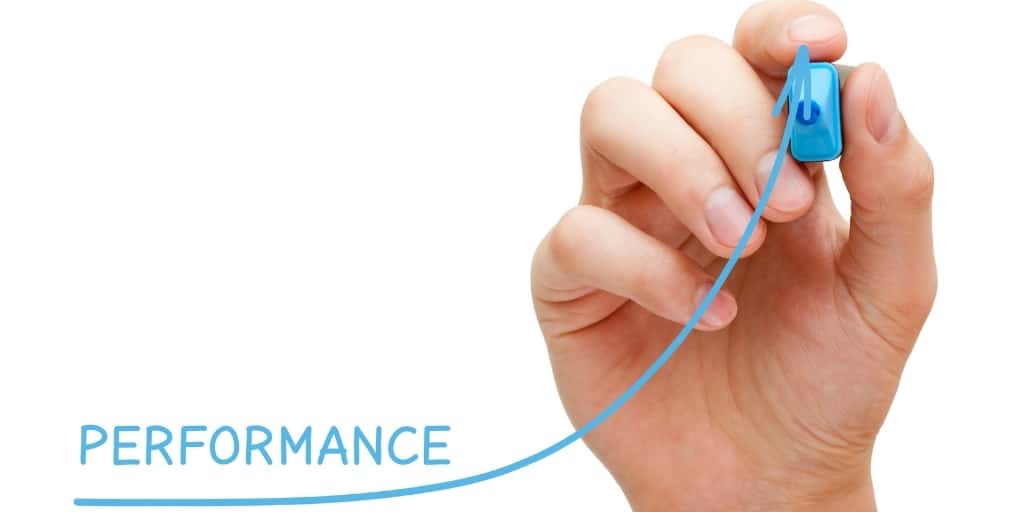Say you’re the COO of a growing startup. Since you joined the company, you’ve been ensuring it meets its objectives and even grows by setting Key Performance Indicators (KPI) and using them to track your people’s progress.
That was until the coronavirus pandemic hit. Since then, everything has changed. Your workforce has moved to entirely remote and it’s unclear when they’ll be back in the office. Reality seems to be completely different every day from the day before. In this context, your KPI’s are not working. A benchmark you set a month ago may be totally irrelevant now. Without them to track performance against, you struggle to put processes in place to keep your people connected, communicating, and productive.
Here’s the situation: we can’t manage performance the way we used to anymore. We need a new approach to support our new reality. In fact, we shouldn’t be managing our performance. In the cutthroat, post-COVID world, our actions should be driven by the goal of improving performance. Continuous performance improvement is the solution.
Performance Management Has Always Been With Us… Right?
We know the traditional performance review process doesn’t work: 90% of performance reviews are ineffective in actually impacting results. They are a huge waste of time, with managers spending on average 210 hours per year on that ineffective review. And employees don’t find them useful, preferring immediate feedback to an annual or quarterly review.
It’s hard to change something that’s been a fixture of the workplace forever. Except performance reviews haven’t, as Thomas Koulopoulos explains in a 2018 Inc.com piece. The annual performance review originated in the mid-20th century Industrial Era:
“Elton Mayo, a psychologist and organizational theorists, often considered the father of HR theory, established a model for employee engagement that was an alternative to Frederick Winslow Taylor's rigid scientific management approach. It was a positive change at the time and it started the trend towards more human-centered performance-based management. Then, in the 1950’s, the US government's Performance Rating Act which used the three categories of Outstanding, Satisfactory and Unsatisfactory, along with the Incentive Awards Act, which provided cash bonuses and incentives to government employees, both further cemented the idea of performance-based reviews. It wasn't until 1970, however, that Aubrey Daniels, considered by many the father of performance management, coined the term "performance management." Since then we've accepted the annual performances review as gospel.”
The workforce, and the way we work, have changed drastically since the 1970’s. Accordingly, performance management should no longer be the standard way our organizations track and meet our goals.

From Management to Improvement
Continuous performance improvement is a new way of looking at traditional employee review structures. Instead of annual or quarterly reviews, continuous performance improvement lets you gather data on employee output from a variety of touch points. This results in a more holistic and accurate picture of employee performance, countering the possibility of bias or one-dimensional data points. Most important, this allows managers to stop managing employee performance, and start improving it.
A strategy built on continuous performance improvement lets us move away from the old way of managing performance, characterized by:
- Top-down management
- Quarterly or annually reviews
- Micromanaged results
- Irrelevant KPI’s
To an improvement focused strategy, characterized by:
- Bottom-up management
- Empowered, growth employees
- Continuous or daily feedback
- Improving on daily tasks - which amount to real change across teams and departments
Why Improvement Now?
Let’s get back to you. Why, in the middle of a global pandemic, should you consider changing the way you manage performance in your company? Well, why not now? The pandemic has transformed the way we do business, so we must evolve in response. Largely remote workforces mean we need to rethink how we communicate and connect with colleagues. Reduced revenues mean we need to adopt simple and lean operational processes. Constant uncertainty means we need to adapt quickly. Traditional performance management fails to meet those needs.
Continuous performance improvement does. When you stop managing your performance with traditional methods, and start focusing on continuously improving it, your teams are more aligned, because they’re communicating more regularly. You develop a process that allows your people to learn and improve with minimal disruption to their workflow, and maximal impact on business goals. And when reality inevitably changes again, you’re equipped to react fast. In other words, there is no better time than right now to implement continuous performance improvement practices.
